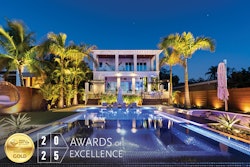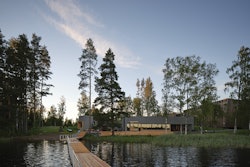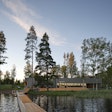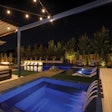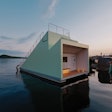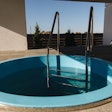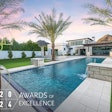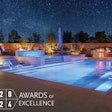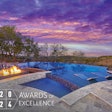
There is no doubt that the economy has affected the pool and hot tub industry. When you have an industry where 60 percent of new pools are tied to the sale of new homes and when housing starts decline 43 percent, you're in trouble right away.
2. Forty-one percent of builders cited lending as their biggest concern affecting business this year. How can builders work their way around that?
I have heard it argued that the state of secondary capital markets is the worst it has been since the Great Depression. In any event, we know two things: Consumers have less access to credit card debt because banks are tightening their balance sheets; and there is, on a per-household basis, less available home equity than we have seen in a long time. Builders we survey point to a 30 to 40 percent contract failure rate because of the inability of the owner to generate financing. Yet few builders are in a position to offer captive financing programs. Add to that the fact that few areas of the country see inground swimming pools as a net positive impact on home value and there is little incentive to offer fresh financing.
3. What other important factors do you see affecting the industry?
Pent-up demand. There are 54 million single-family homes in this country that do not have a swimming pool but meet the home value and household income expectations that we usually associate with in- or aboveground pool ownership. At this industry's pre-recession sales level that works out to about 100 years worth of sales. Yet when we ask non-owners how likely are they to shop for or seriously consider a new pool or hot tub in the next two years, only 8 percent respond positively. Yet similar surveys of current pool owners produce 70 to 80 percent repurchase and/or recommendation rates. What's wrong with this picture?
4. What are some major building trends at the moment?
Based on our permit data, pools are nearly 30 percent smaller and the average contract price is down 24 percent. Backyards are also getting smaller according to Census Bureau data.
5. What role will the market price for building supplies play in the increase or decrease in new pool builds in the year to come?
Commodity prices for cement, plastics and steel - three important components in pool construction - have been all over the board lately. Yet the average contract price for a new inground residential swimming pool is down 24 percent over the past 12 months according to our pool permit data that we collect from over 300 markets. That can mean only one thing - the builders are taking it in the margins.
6. I think it's safe to say that people are tired of hearing bad news, and they want solutions and ideas for moving forward and increasing business. What advice is there to offer builders in achieving this?
The key issue is access to secondary financing. In most cases, builders don't make their profits on the box of water - it's on the add-on's. Builders stand a much better chance of selling a contract if it is profitable. Therefore, my suggestion is to offer designs that have a wide assortment of amenities, e.g., gazebos, spas, fountains, lighting, controllers, and automatic pool cleaners. The deal to the owners is, yes, the contract price is higher, but I - the builder - am a lot more likely to get your pool financed if we include the add-ons. The builder has a more profitable contract, and the owner has a pool he/she might not have otherwise had.
7. Any signs that the market is on the upswing?
Credit markets are starting to loosen up. If we continue to see the reemergence of some of the traditional lenders from five years ago then I think we will see some new energy in the market. But back to the heady 200,000 inground units of 2005? Probably not; at least for a while.
8. Residential hot tub sales have declined over the past few years. Is there any sign that the demand for hot tubs will increase?
Over the past five years the average growth in annual hot tub unit sales has been -15.5 percent. During the prior five years the average annual unit growth was +7.3 percent. During that 10-year period, the average discretionary level of household income has been +0.3 percent.
9. What are some best practices that builders can use to keep raising the standards of the industry?
Too many builders see pools as boxes of water in the backyard. We are selling lifestyle, health, family time, ambience. Best practices need to be all about lifestyle and return on investment.
Comments or thoughts on this article? Please e-mail [email protected].


























